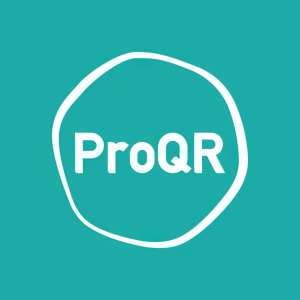ProQR Announces Highlights from Analyst Event
Rhea-AI Summary
ProQR Therapeutics N.V. (Nasdaq: PRQR) hosted a virtual Analyst Event on November 18, 2021, highlighting its clinical-stage RNA therapies for genetic eye diseases. Key updates include the Phase 2/3 Illuminate trial for sepofarsen, with top-line results expected in Q1/Q2 2022, showing potential visual acuity improvements. Additionally, data from the QR-421a and QR-1123 trials indicated benefits in vision for Usher syndrome and retinitis pigmentosa patients. ProQR is advancing its pipeline with strategic clinical trials, aiming for impactful RNA therapies.
Positive
- Top-line results from the Phase 2/3 Illuminate trial for sepofarsen expected in late Q1/early Q2 2022.
- Phase 1/2 Stellar trial of QR-421a showed significant visual acuity improvements with no serious adverse events.
- Plans to advance QR-421a into two pivotal Phase 2/3 trials by year-end 2021.
- QR-1123 trial demonstrated initial clinical benefits and plans for advancement to repeated dose Phase 2 trial.
Negative
- No serious adverse events reported, but common adverse events like cataracts and CME were noted in the QR-1123 trial.
News Market Reaction 1 Alert
On the day this news was published, PRQR gained 0.26%, reflecting a mild positive market reaction.
Data tracked by StockTitan Argus on the day of publication.
LEIDEN, Netherlands & CAMBRIDGE, Mass., Nov. 18, 2021 (GLOBE NEWSWIRE) -- ProQR Therapeutics N.V. (Nasdaq: PRQR) (the “Company”), a company dedicated to changing lives through the creation of transformative RNA therapies for genetic eye diseases, today hosted a virtual Analyst Event. Management provided an in-depth review of the Company’s clinical-stage programs and RNA editing technology platforms.
A webcast replay of the event including slides is available from the “Investors & Media” section of ProQR’s website (www.proqr.com) under “Events”. Highlights from today’s presentations include the following:
Sepofarsen for CEP290-mediated Leber congenital amaurosis 10 (LCA10):
- The Company expects to report top-line results from the Phase 2/3 Illuminate trial in late Q1/early Q2 2022. The Illuminate trial completed enrollment in January 2021 following randomization of 36 patients aged 8 years or older to receive either sepofarsen at the target registration dose, a low dose, or sham treatment. The primary endpoint for Illuminate is mean change from baseline in best-corrected visual acuity (BCVA) at Month 12.
- The Illuminate study was initiated based on data from a Phase 1/2 study, which indicated that at Month 12, patients treated with sepofarsen had an improvement in visual acuity, as measured by BCVA. In a subset of patients (n=6) who were treated at the target registration dose, the mean change from baseline for BCVA at Month 12 was -0.93 logMAR, equivalent to approximately 9 lines improvement (or 45 letters) on the ETDRS chart. In the Phase 1/2 study, concordant improvements in measures of full-field stimulus testing (FST) and mobility were also observed, which are secondary endpoints in the Illuminate trial.
- Participants in the Phase 1/2 trial were eligible to roll over into the InSight open-label extension study for longer term follow up and could elect to receive sepofarsen treatment in the second eye. The Company presented that the vast majority of the treated eyes in InSight have demonstrated responses on multiple endpoints and shared experiences from several of the study participants.
- A mobility course validation trial was conducted at 17 sites across 9 countries. 48 patients are included in the final analysis, which is underway. Once finalized, the Company will discuss with Regulators next steps regarding potential validation of this as an endpoint for future studies in inherited retinal diseases (IRDs).
- The primary objective of the Phase 2/3 Brighten trial is to evaluate safety and tolerability of sepofarsen in children under 8 years of age. Enrollment of 5 patients in the open-label, dose-escalation portion of the study is complete, with the double masked randomization portion of the trial getting underway and expected to enroll 10 patients.
QR-421a for USH2A-mediated Usher syndrome and retinitis pigmentosa (RP):
- The Phase 1/2 Stellar trial demonstrated concordant benefit on multiple measures of vision, including visual acuity, visual fields, and the objective measure of optical coherence tomography (OCT) retinal imaging, after a single dose of QR-421a. QR-421a was observed to be well tolerated with no serious adverse events reported.
- The Company shared new longitudinal data on the BCVA outcome measure.
- Among participants with advanced disease (n=6), a mean benefit of 9.3 letters was observed at week 48 in the treated eyes as compared to the untreated eyes, as previously reported. At 72 weeks of follow up, the treatment benefit has extended to a mean benefit of 13 letters after a single injection. BCVA is the primary endpoint in the Sirius Phase 2/3 pivotal trial in advanced patients.
- Based on the findings from Stellar, the Company plans to advance QR-421a into two pivotal Phase 2/3 trials by year end. The Company shared the final design of the Sirius and Celeste pivotal trials as agreed upon with Regulators.
- The Phase 2/3 Sirius trial in advanced patients is a double-masked, randomized, sham controlled multiple dose study, in approximately 80 patients (age 12+ years). The primary endpoint is change from baseline in BCVA at month 18, versus sham.
- The Phase 2/3 Celeste trial in early to moderate patients is a double-masked, randomized, sham controlled, multiple dose study in approximately 120 patients (age 12+ years). The primary endpoint is change from baseline in mean sensitivity in static perimetry at Month 12 versus sham.
- Both studies will consist of three arms: Dosing arm 1 (180 µg Loading dose and 60 µg maintenance dose given 6-monthly), Dosing arm 2 (60 µg Loading dose and 60 µg maintenance given 6-monthly), and a Sham arm for masking purposes.
- The Company has begun enrolling eligible individuals from the Phase 1/2 Stellar trial in the Helia open-label extension study, which will include multiple dose treatments for both eyes. The Company expects to share an update from the Helia study by year end 2022.
QR-1123 for RHO-mediated autosomal dominant retinitis pigmentosa (adRP):
- The Company provided an update from the Phase 1/2 Aurora trial for adRP with initial clinical data. A single dose of QR-1123 (gapmer) showed early evidence of target engagement and was well tolerated with no serious adverse events.
- There were no serious adverse events (SAEs) at all the doses evaluated. Adverse events (AEs) observed were similar to those observed in the natural history including cataracts (9 of 11 patients had cataracts in both eyes at baseline with 3 cases of cataract worsening observed) and cystoid macular edema (CME, 7 of 11 patients had CME or retinal cysts at baseline in one or both eyes).
- BCVA findings: Maximum benefit in BCVA was observed after 5 weeks of treatment and declined thereafter, consistent with the 5 week half life of QR-1123. Across all subjects, the treated eye showed a mean BCVA benefit of +1.4 letters. In doses 75 - 300µg, the mean BCVA benefit was +5 letters, maximum benefit observed was +7 letters.
- Static perimetry findings: Across all subjects, there was mean total retinal sensitivity improvement (treated eye minus untreated eye) of +50 dB. Across all subjects, the mean number of retinal loci with ≥7 dB improvement from baseline was greater in treated eyes compared to untreated eyes.
- Based on the findings, ProQR plans to advance QR-1123 to a repeated dose Phase 2 trial with doses up to 300 μg in 2022.
QR-504a for TCF4-mediated Fuchs Endothelial Corneal Dystrophy (FECD):
- The Phase 1b Fuchs Focus study is currently open for enrollment. This study is evaluating safety, tolerability, and molecular biomarker(s), i.e., target engagement, in the corneal endothelium following a single intravitreal injection of QR-504a in approximately 10 patients with FECD who are scheduled for corneal transplant with concurrent lens replacement.
- ProQR anticipates reporting initial data from this trial in 2022.
RNA base-editing platform technologies – Axiomer® and Trident®
- ProQR has been further optimizing the Axiomer® Editing Oligonucleotide (EON) designs and shown efficient editing levels in retinal organoid models. ProQR will develop selected genetic eye disease targets with Axiomer®, and will provide further guidance on this in H2 2022.
- ProQR achieved proof of concept for the Trident® technology in several models showing translational correction of premature stop codons in RNA and inhibition of nonsense mediated decay. Further optimizations of the Trident® platform for development purposes are ongoing.
Additional genetic disease targets
- The Company plans to advance an additional genetic eye disease target into preclinical development in 2022.
About Leber Congenital Amaurosis 10 (LCA10)
Leber congenital amaurosis (LCA) is the most common cause of blindness due to genetic disease in children. It consists of a group of diseases of which LCA10 is the most frequent and one of the most severe forms. LCA10 is caused by mutations in the CEP290 gene, of which the p.Cys998X mutation has the highest prevalence. LCA10 leads to early loss of vision causing most people to lose their sight in the first few years of life. To date, there are no treatments approved that treat the underlying cause of the disease. Approximately 2,000 people in the Western world have LCA10 because of this mutation.
About Sepofarsen
Sepofarsen (QR-110) is being evaluated in the pivotal Phase 2/3 Illuminate trial and is a first-in-class investigational RNA therapy designed to address the underlying cause of Leber congenital amaurosis 10 due to the p.Cys998X mutation (also known as the c.2991+1655A>G mutation) in the CEP290 gene. The p.Cys998X mutation leads to aberrant splicing of the mRNA and non-functional CEP290 protein. Sepofarsen is designed to enable normal splicing, resulting in restoration of normal (wild type) CEP290 mRNA and subsequent production of functional CEP290 protein. Sepofarsen is intended to be administered through intravitreal injections in the eye and has been granted orphan drug designation in the United States and the European Union and received fast-track designation and rare pediatric disease designation from the FDA as well as access to the PRIME scheme by the EMA.
About Usher Syndrome Type 2a and Retinitis Pigmentosa (RP)
Usher syndrome is the leading cause of combined deafness and blindness. People with Usher syndrome type 2a are usually born with hearing loss and start to have progressive vision loss during adulthood. The vision loss can also occur without hearing loss in a disease called retinitis pigmentosa. Usher syndrome type 2a and retinitis pigmentosa can be caused by mutations in the USH2A gene. To date, there are no pharmaceutical treatments approved or in clinical development that treat the vision loss associated with mutations in USH2A.
About QR-421a
QR-421a is a first-in-class investigational RNA therapy designed to address the underlying cause of vision loss in Usher syndrome type 2a and retinitis pigmentosa due to mutations in exon 13 of the USH2A gene. QR-421a is designed to restore functional usherin protein by using an exon skipping approach with the aim to stop or reverse vision loss in patients. QR-421a is intended to be administered through intravitreal injections in the eye and has been granted orphan drug designation in the US and the European Union and received fast-track and rare pediatric disease designations from the FDA.
About Autosomal Dominant Retinitis Pigmentosa (adRP)
Autosomal dominant retinitis pigmentosa, or adRP, is a severe and rare genetic disease that causes progressive problems in night vision during childhood, leading to visual field loss and frequently resulting in blindness in mid adulthood. In the United States, the most prevalent mutation associated with adRP is the P23H point mutation (also known as the c.68C>A mutation) in the rhodopsin (RHO) gene and affects approximately 2,500 people. This mutation causes misfolding of the rhodopsin protein that becomes toxic to the photoreceptor cells and at the same time diminishes the function of the wild type allele. Over time this results in cell death and progressive vision loss. There are currently no therapies approved or in clinical development for P23H adRP. A natural history study in patients with P23H adRP has been conducted.
About QR-1123
QR-1123 is a first-in-class investigational RNA therapy designed to treat adRP due to the P23H mutation in the RHO gene. QR-1123 was discovered and developed by Ionis Pharmaceuticals using Ionis’ proprietary antisense technology. The therapy aims to inhibit the formation of the mutated toxic version of the rhodopsin protein by specifically binding the mutated RHO mRNA. Binding of QR-1123 causes allele specific knockdown of the mutant mRNA by a mechanism called RNase H mediated cleavage without affecting the normal RHO mRNA. QR-1123 is intended to be administered through intravitreal injections in the eye. QR-1123 has been granted Orphan Drug designation in the United States and received Fast Track designation from the FDA.
About Fuchs Endothelial Corneal Dystrophy (FECD)
Fuchs endothelial corneal dystrophy (FECD) type 3 is a common genetic disease that leads to progressive degeneration of the corneal endothelium resulting in corneal edema, scarring and vision loss. Blisters on the cornea are a major cause of pain in patients with advanced FECD. Currently there are no treatment options available to stop or slow down FECD and disease management is aimed to reduce symptoms. The only effective therapy for late-stage FECD is corneal transplantation. The availability of donors, risk of rejection, and the inherent risk of such surgeries are some of the limitations of this option. FECD is a common disorder affecting more than
About QR-504a
QR-504a is a first-in-class investigational RNA therapy designed to address the underlying cause of Fuchs endothelial corneal dystrophy (FECD) due to trinucleotide repeat (TNR) expansion mutations in the TCF4 gene. The TNR expansions cause the TCF4 RNA to aggregate in the corneal endothelial cells forming the characteristic nuclear RNA foci and eventually resulting in FECD. QR-504a is designed to target the TNRs in the TCF4 RNA. The aim is to reduce aggregation and the formation of RNA foci to prevent or stop corneal degeneration in patients with FECD. QR-504a is intended to be administered through intravitreal injections in the eye.
About Axiomer® and Trident®
ProQR is pioneering a next-generation RNA technology called Axiomer®, which could potentially yield a new class of medicines for genetic diseases. Axiomer® “Editing Oligonucleotides”, or EONs, mediate single nucleotide changes to RNA in a highly specific and targeted way using molecular machinery that is present in human cells. The Axiomer® EONs are designed to recruit an endogenously expressed RNA editing system called ADAR, which can direct the change of an Adenosine (A) to an Inosine (I) in the RNA – an Inosine is translated as a Guanosine (G).
Our Trident® RNA pseudouridylation platform enables the suppression of nonsense mutations and premature stop codons (PTC) that cause human genetic diseases. Since all premature stop codons contain uridine, pseudouridylation of that uridine converts those nonsense codons into sense codons. Trident® technology harnesses endogenously expressed pseudouridylation machinery to guide RNAs to inhibit nonsense mRNA-mediated decay (NMD) in a sequence-specific manner and promote PTC readthrough. The Trident® technology has the potential to be applied in approximately
About ProQR
ProQR Therapeutics is dedicated to changing lives through the creation of transformative RNA therapies for the treatment of severe genetic rare diseases such as Leber congenital amaurosis 10, Usher syndrome and retinitis pigmentosa. Based on our unique proprietary RNA repair platform technologies we are growing our pipeline with patients and loved ones in mind.
Learn more about ProQR at www.proqr.com.
FORWARD-LOOKING STATEMENTS
This press release contains forward-looking statements. All statements other than statements of historical fact are forward-looking statements, which are often indicated by terms such as "anticipate," "believe," "could," "estimate," "expect," "goal," "intend," "look forward to", "may," "plan," "potential," "predict," "project," "should," "will," "would" and similar expressions. Such forward-looking statements include, but are not limited to, statements regarding sepofarsen (QR-110) and the clinical development and the therapeutic potential thereof, statements regarding QR-421a and the clinical development and the therapeutic potential thereof, statements regarding QR-1123 and the clinical development and therapeutic potential thereof, statements regarding the QR-504a and the clinical development and therapeutic potential thereof, statements regarding our pipeline of programs targeting inherited retinal dystrophies, including timing of commencing clinical trials and enrollment of patients therein, and our other programs and business operations (including Axiomer and Trident).. Forward-looking statements are based on management's beliefs and assumptions and on information available to management only as of the date of this press release. Our actual results could differ materially from those anticipated in these forward-looking statements for many reasons, including, without limitation, the risks, uncertainties and other factors in our filings made with the Securities and Exchange Commission, including certain sections of our annual report filed on Form 20-F. These risks and uncertainties include, among others, the cost, timing and results of preclinical studies and clinical trials and other development activities by us and our collaborative partners whose operations and activities may be slowed or halted by the COVID-19 pandemic; the likelihood of our clinical programs being executed on timelines provided and reliance on our contract research organizations and predictability of timely enrollment of subjects and patients to advance our clinical trials and maintain their own operations; our reliance on contract manufacturers to supply materials for research and development and the risk of supply interruption from a contract manufacturer; the potential for future data to alter initial and preliminary results of early-stage clinical trials; the unpredictability of the duration and results of the regulatory review of applications or clearances that are necessary to initiate and continue to advance and progress our clinical programs; the ability to secure, maintain and realize the intended benefits of collaborations with partners; the possible impairment of, inability to obtain, and costs to obtain intellectual property rights; possible safety or efficacy concerns that could emerge as new data are generated in research and development; our ability to maintain and service our loan facility with Pontifax and Kreos; general business, operational, financial and accounting risks; and risks related to litigation and disputes with third parties. Given these risks, uncertainties and other factors, you should not place undue reliance on these forward-looking statements, and we assume no obligation to update these forward-looking statements, even if new information becomes available in the future, except as required by law.
Cautionary Note on Future Updates
The statements contained in this press release reflect our current views with respect to future events, which may change significantly as the global consequences of the COVID-19 pandemic rapidly develop. Accordingly, we do not undertake and specifically disclaim any obligation to update any forward-looking statements.
ProQR Therapeutics N.V.
Investor Contact:
Sarah Kiely
ProQR Therapeutics N.V.
T: +1 617 599 6228
skiely@proqr.com
or
Hans Vitzthum
LifeSci Advisors
T: +1 617 430 7578
hans@lifesciadvisors.com
Media Contact:
Cherilyn Cecchini, MD
LifeSci Communications
T: +1 646 876 5196
ccecchini@lifescicomms.com









